Let me count the ways" The opening lines of 'Sonnet 43' by Elizabeth Barrett Browning are perhaps some of the most wellknown and oft quoted in history But how much do you know about the fêted poet herself? · Elizabeth Barrett Browning 's "Sonnet 43 How do I love thee? · Let me count the ways I love thee to the depth and breadth and height My soul can reach, when feeling out of sight For the ends of being and ideal grace I love thee to the level of every day's Most quiet need, by sun and candlelight I love thee freely, as men strive for right I love thee purely, as they turn from praise I love thee with the passion put to use In my old

Quote By Elizabeth Barrett Browning How Do I Love Thee Let Me Count The Ways I Lo
How do i love thee let me count the ways by elizabeth barrett browning
How do i love thee let me count the ways by elizabeth barrett browning-Let me count the ways I love thee to the · Sonnet 43′ by Elizabeth Barrett Browning describes the love that one speaker has for her husband She confesses her ending passion It is easily one of the most famous and recognizable poems in the English language In the poem, the speaker is proclaiming her unending passion for her beloved




How Do I Thee Let Me Count The Ways The Millennial Mirror
Let me count the ways' · 'How do I love thee?Let me count the ways I love thee to the depth and breadth and height My soul can reach, when feeling out of sight For the ends of being and ideal grace I love thee to the level of every day's Most quiet need, by sun and candlelight I love thee freely, as men strive for right I love thee
· While Sonnet 43 by the inimitable Elizabeth Barrett Browning was written for her then husbandtobe, Robert Browning, I feel justified in borrowing it for this love poem to print You see, I have had a lifelong devotion to print Well, lifelong from the time I bought the first copy of Superman magazine at the age of 10 to the age I findLet me count the ways I love thee to the doeth and breadth and height My soul can reach, when feeling out of sight For the end of Being and Ideal Grace I love thee to the level of everyday's Most quiet need, by sun and candlelight I love thee freely, as men strive for Right, I love thee purely, as they turn from Praise; · 'How do I love thee?
· Another effective articulation of love is the resemblance between Barrett Browning's commitment to Robert and the strive for freedom and justice "I love thee freely, as men strive for Right/ I love thee purely, as they return from Praise" (78) Barrett Browning employs such tropological usage to invite the reader to set a different focus;' was first published in the collection Sonnets from the Portuguese (1850), which Elizabeth Barrett Browning dedicated to her husband, the poet Robert Browning The poem is a conventional Petrarchan sonnet that lists the different ways in which the poet loves her husband How do I love thee words?How Do I Love Thee?
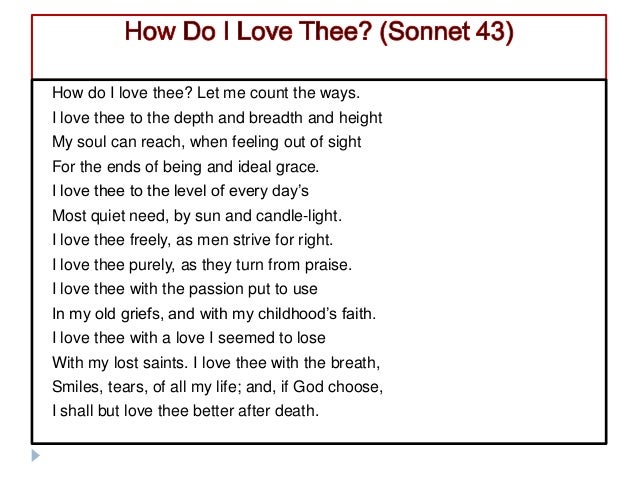



Sonnet 43 How Do I Love Thee By Elizabeth Barrette Browning




Elizabeth Barrett Browning Posterdruck How Do I Love Thee Let Me Count The Ways Von Elizabeth Barrett Browning 61 X 91 Cm Amazon De Kuche Haushalt
Within Elizabeth Barrett Browning's poems, "How Do I Love Thee (Let Me Count the Ways)", "Love", and "A Man's Requirements", a reoccurring theme of agape, unconditional, love appears In these three poems, her expression of love is very evident and clear However, the way she expresses love is quite different than many poetsLet me count the ways I love thee to the depth and breadth and height My soul can reach, when feeling out of sight For the ends of being and ideal grace I love thee to the level of every day's Most quiet need, by sun and candlelight I love thee freely, as men strive for right I love thee purely, as they turn from praiseLet me count the ways" Elizabeth uses many abstract analogies to list and describe the way she loves her beloved Her love is a pure love, a free love, and a passionate love Of course, the topper, her love is




Elizabeth Barrett Browning How Do I Love Thee Let Me Count The Ways I Love Thee To The Depth And Breadth And Height My Soul Can Reach
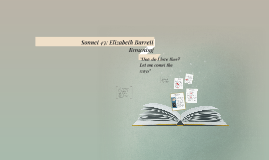



Sonnet 43 Elizabeth Barrett Browning By Cailyn Sutliff
' is a love poem by Elizabeth Barrett Browning first published in the compilation of the Portuguese Sonnets (1850), which Elizabeth Barrett Browning devoted to her husband, the poet Robert Browning whom she loved deeply The poem is a typical Petrarchan sonnet that describes the various ways in which the poet loves her husband · Elizabeth Barrett Browning your guide to the poet's life, work and love "How do I love thee?Let me count the ways" is part of the volume Sonnets from the Portuguese The collection of 44 sonnets was published in 1850 and dedicated to her husband, the poet Robert Browning
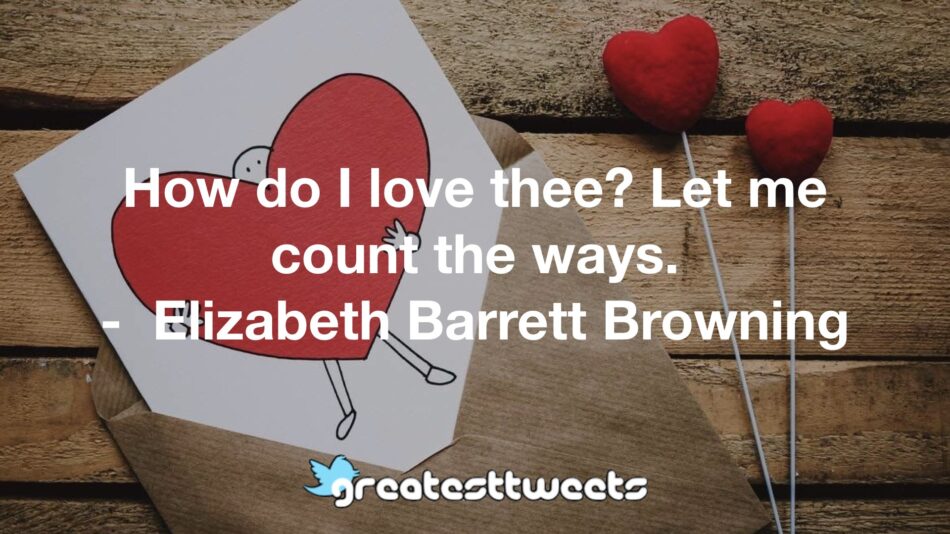



How Do I Love Thee Let Me Count The Ways
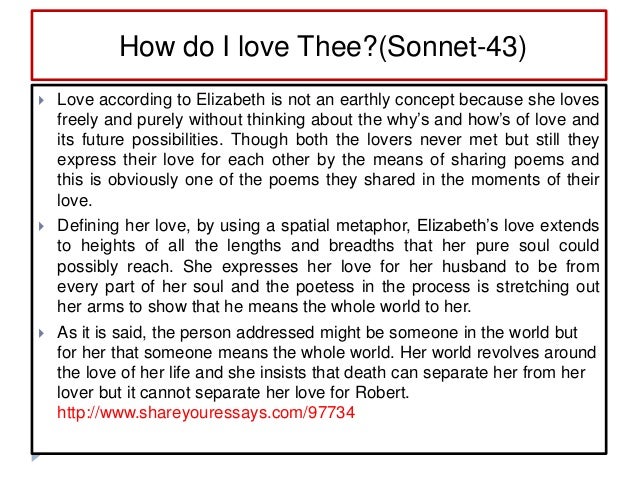



Sonnet 43 How Do I Love Thee By Elizabeth Barrette Browning
· As it is known that Elizabeth Barrett Browning dedicated this poem to her husband, she is assumed to be the speaker addressing her husband The speaker describes all the ways in which she loves her husband Her love is multifaceted, as it canHow do I love thee?The last couple of lines of the poem show us exactly what Elizabeth Barrett Browning was feeling "I love thee with the breadth, smiles, tears, of all my life;




Card How Do I Love Thee Inspired Living



How Do I Love Thee Let Me Count The Ways I Love Thee To The Picture Quotes
While Elizabeth Barrett Browning counted 25 ways in which she loves her husband in her poem, "How Do I Love Thee?Sonnet 43 Elizabeth Barrett Browning Traduzione Letterale (Carmelo Mangano) How do I love thee?Let me count the ways Famously the stanzas of Sonnet 43 by English poet Elizabeth Barrett Browning have been much quoted over time Lovers have used them as declarations of undying love and I am in no doubt they are inscribed and devoted to many a Valentine's Day gift February 14 is traditionally the day the western world celebrates love




The Analysis Of Poem How Do I Love Thee Let Me Count The Ways A Cup Of Hot Chocolate




Quote By Elizabeth Barrett Browning How Do I Love Thee Let Me Count The Ways I Lo
· After four months and an exchange of 30 letters, Elizabeth allowed Browning to visit her The day after their first meeting, he wrote declaring his · Let me count the ways I love thee to the depth and breadth and height My soul can reach, when feeling out of sight For the ends of Being and ideal Grace I love thee to the level of everyday's Most quiet need, by sun and candlelight I love thee freely, as men strive for Right;Fammi contare i modi I love thee to the depth and breadth and height Ti amo fino alla profondità,l'ampiezza e l'altezza My soul can reach, when feeling out of sight = fuori vista (che) la mia anima possa raggiungere, quando




How Do I Love Thee Clifford Mansley Calligraphy Heirloom Artists Holly Monroe
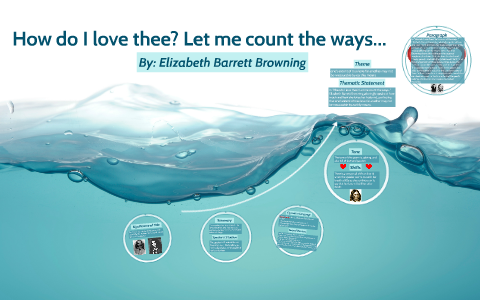



How Do I Love Thee Let Me Count The Ways By Yuri Lee
/11/1999 · Let me count the ways I love thee to the depth and breadth and height My soul can reach, when feeling out of sight For the ends of being and ideal grace I love thee to the level of every day's Most quiet need, by sun and candlelight I love thee freely, as men strive for right I love thee purely, as they turn from praise I love thee with the passion put to use In my oldHow do I love thee?Let me count the ways I love thee to the depth and breadth and height My soul can reach, when feeling out of sight For the ends of Being and ideal Grace I love thee to the level of every day's Most quiet need, by sun and candlelight I love thee freely, as men strive for Right;




Amazon Com Elizabeth Barrett Browning Sonnet 43 Floating Quote How Do I Love Thee Let Me Count The Ways Poem Poetry Anniversary Gift Romatic Gift For Wife Handmade




Pin On Elizabeth Barrett Browning Poems Quotes
Let me count the ways" The love that is appeared in this poem is a complexLet me count the ways I love thee to the depth and breadth and height My soul can reach, when feeling out of sight For the ends of being and ideal grace · Let me count the ways' But the poem is not one of Shakespeare's addressed to the Fair Youth, but rather a love poem written about Barrett Browning's own beloved, Robert The poem was first published in a sonnet sequence, Sonnets from the Portuguese, in 1850, though the poems that make up the sequence were written around five years earlier




How Do I Love Thee Let Me Count The Ways Elizabeth Barrett Browning




How Do I Love Thee Inspirational Quote By Elizabeth Barrett Browning
Let me count the ways" is a wellknown sonnet written by the 19thcentury poet Elizabeth Barrett Browning It is her most wellknown and bestloved poem that first appeared as sonnet 43 in her collection of Sonnets from the Portuguese (1850)Is a simple sonnet by Elizabeth Barrett Browning, in which she proclaims her undying love for her darling husband She believes her love to be immortal and omnipresent Her words transcend her emotions of being head over heels in love with himSonnets from the Portuguese are a sequence of 44 sonnets which were written by Elizabeth Barrett Browning during the course of her courtship with the poet Robert Browning Sonnet 43 is the perhaps the most famous, with the opening line 'How do I love thee?
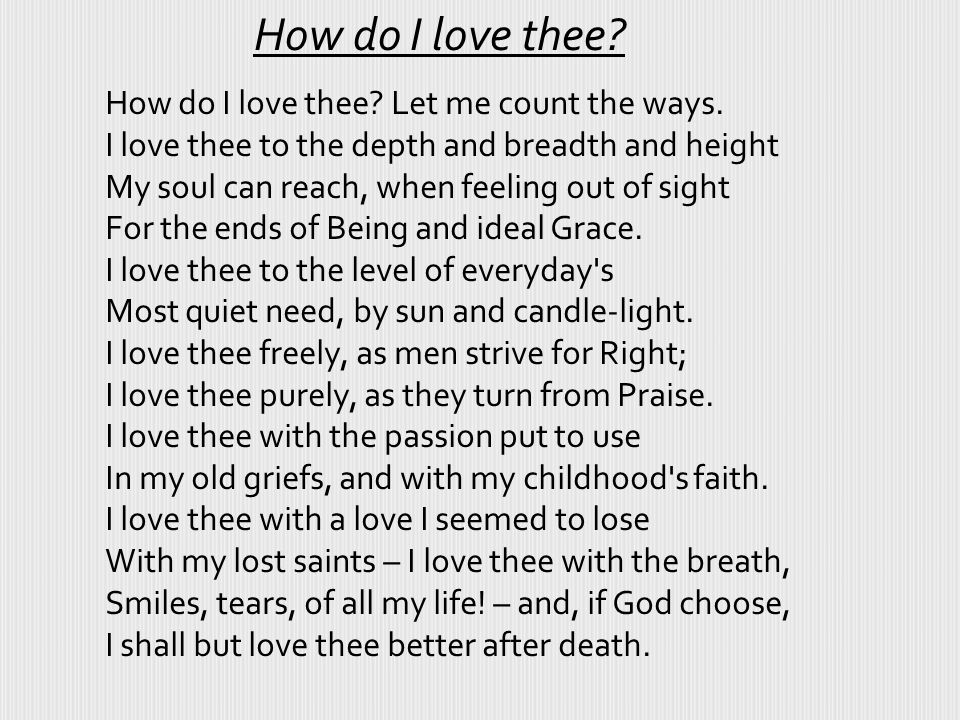



Elizabeth Barret Browning Ppt Download




How Do I Love Thee Let Me Count The Ways Sonnet 43 Shmoop Poetry Guide Amazon De University Shmoop Barrett Fremdsprachige Bucher
I love thee purely, as they turn from praise I love thee withMy dear Grandmother presented me with a copy of "Sonnets from the Portuguese" on my tenth birthday My favourite sonnet was How do I love thee? · Let me count the ways I love thee to the depth and breadth and height My soul can reach, when feeling out of sight For the ends of Being and ideal Grace Read More 2 Sonnet 14 If Thou Must Love Me, Let It Be For Nought ★ ★




Leaf Quote How Do I Love Thee Let Me Count The Ways Elizabeth Bar A Blackbird Sang




Positively Green How Do I Love Thee Let Me Count The Ways Compendium Greeting Cards
By Elizabeth Barrett Browning How do I love thee?Let me count the ways I love thee to the depth and breadth and height My soul can reach, when feeling out of sight For the ends of being and ideal grace I love thee to the level of every day's Most quiet need, by sun and candlelight I love thee freely, as men strive for right;Let me count the ways I love thee to the depth and breadth and height My soul can reach, when feeling out of sight For the ends of being and ideal grace




Elizabeth Barrett Browning How Do I Love Thee How Do I Love Thee Let Me Count The Ways I Love Thee To The Depth And Breadth And Height My Soul




Elizabeth Barrett Browning Zitate Auf Englisch Englischezitate De
I love thee purely, as they turn from praise I love thee with the passion put to use In my oldLet me count the ways" is one of the most famous love poems in the English language Because it's so famous, many readers mistakenly attribute the poem to that master sonneteer, William Shakespeare However, "How do I love thee?" was written centuries after Shakespeare – in fact, it's only been around for a little over 150 yearsAnd, if God choose, I shall but love




Elizabeth Barrett Browning How Do I Love Thee Let Me Count The Ways I
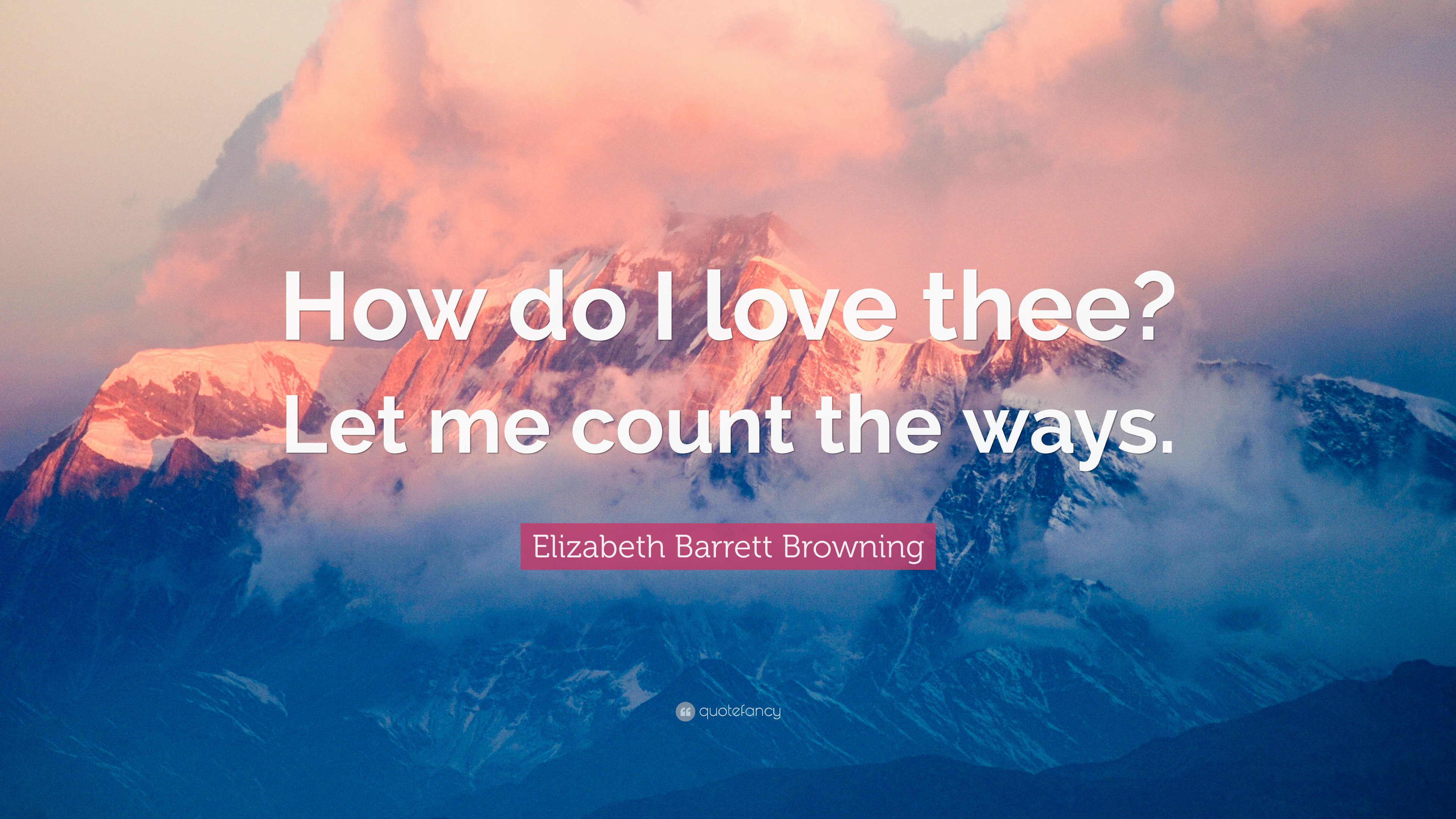



Elizabeth Barrett Browning Quote How Do I Love Thee Let Me Count The Ways
Let me count the ways" It also features some interpretive dance More · Elizabeth Barrett Browning Let me count the ways in which I love this sonnet Before I was introduced to 'Sonnets from the Portuguese ' the 44 sonnet sequence from which this 43rd sonnet has been taken, I read Pearl S Buck's short story of a plain, nondescript school teacher, leading a staid life, governed by routineLet me Count the Ways" is a poem bathed in rhyme and inundated in sentimental avowals This sonnet shows the perpetual love that Browning shares with her husband and how that love can never be destroyed by any power of human or spiritual nature ( Elizabeth Barrett Browning
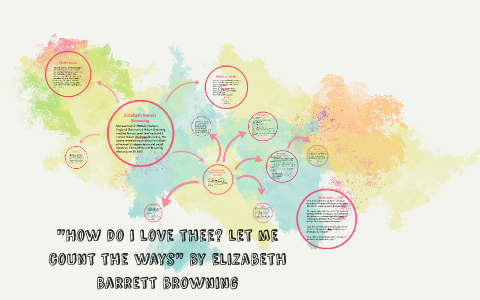



How Do I Love Thee Let Me Count The Ways By Catie Hopkins




How Do I Love Thee Let Me Count The Ways French Women Don T Get Fat
Let me Count the Ways," we identified only eight ways to evaluate the potential for success of a federal research grant proposal This may be surprising, as it seems upon initial glance of the review criteria used by various federal · One of the most famous and endearing quotes "how do I love thee?I love thee purely, as they turn from Praise




Elizabeth Barrett Browning Quote How Do I Love Thee Let Me Count The Ways




How Do I Love Thee Sonnet 43 Elizabeth Barrett Browning 1806 1861 How Do I Love Thee Let Me Count The Ways I Love Thee To The Depth And Breadth And
Let me count the ways' In her sequence of 44 love sonnets, Elizabeth Barrett Browning does just that – counts and · Let me count the ways I love thee to the depth and breadth and height My soul can reach, when feeling out of sight For the ends of being and ideal grace I love thee to the level of every day's Most quiet need, by sun and candlelight I love thee freely, as men strive for right;Let me count the ways I love thee to the depth and breadth and height My soul can reach, when feeling out of sight For the ends of being and ideal grace I love thee to the level of every day's Most quiet need, by sun and candlelight I love thee freely, as men strive for right I love thee purely, as they turn from praise
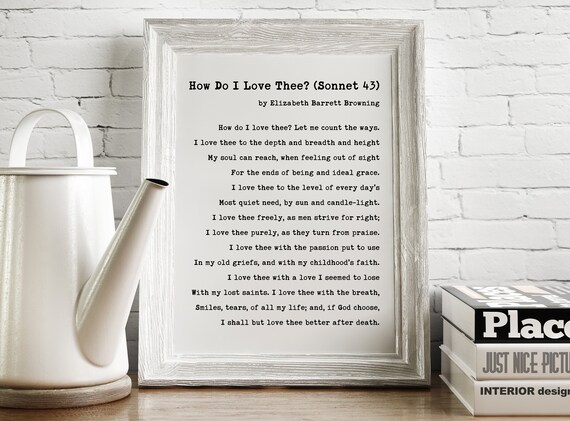



How Do I Love Thee Let Me Count The Ways Elizabeth Barrett Etsy




How Do I Love Thee Let Me Count The Ways Sonnets From The Portuguese 43 Poem Summary And Analysis Litcharts
Let me count the ways Come ti amo?Let me count the ways I love thee to the depth and breadth and height My soul can reach, when feeling out of sight For the ends of being and ideal grace I love thee to the level of every day's Most quiet need, by sun and candlelight I love thee freely, as men strive for right I love thee purely, as they turn from praise I love thee with the passion put to use In my old griefs, and withI love thee purely, as they turn from Praise
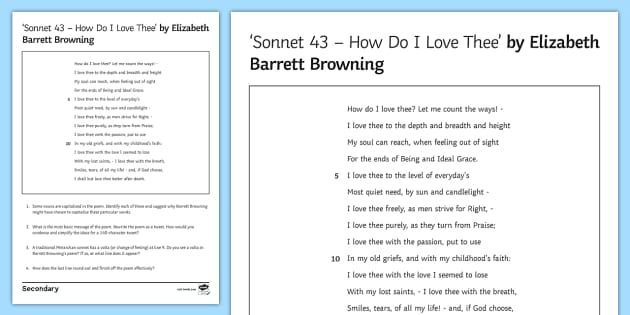



Gcse Sonnet 43 How Do I Love Thee By Elizabeth Barrett Browning Poem And




How Do I Love Thee Let Me Count The Ways Elizabeth Barrett Browning Typography Print Wall Decor Inspirational Poem Wedding Poem Minimalist Art Shop Quotes
Let me count the ways I love thee to the depth and breadth and height My soul can reach, when feeling out of sight For the ends of Being and ideal Grace I love thee to the level of everyday's Most quiet need, by sun and candlelight I love thee freely, as men strive for Right; · We comment by adapting famous literary quotations, including our title from "Sonnet 43" by Elizabeth Barrett Browning We emphasize that any use of machine learning to answer causal questions must be founded in a formal framework for both causal and statistical inference We illustrate the pitfalls that can occur without such a foundation We conclude with someLet me count the ways I love thee to the depth and breadth and height My soul can reach, when feeling out of sight For the ends of being and ideal grace I love thee to the level of every day's Most quiet need, by sun and candlelight I love thee freely, as men strive for right;
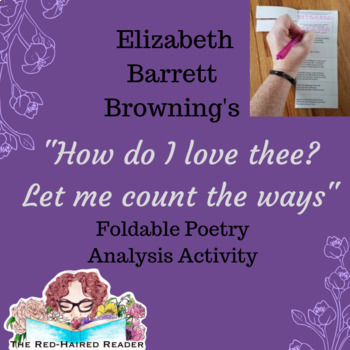



How Do I Love Thee Let Me Count The Ways Elizabeth Barrett Browning Analysis




A True Love Story Elizabeth Barrett Browning Robert Browning Smic English 12 Regular Ppt Download
I love thee purely, as they turn from PraiseEllie Cawthorne delves deeperThis is a video presentationof Elizabeth Barrett browning's poem "How do I love thee?
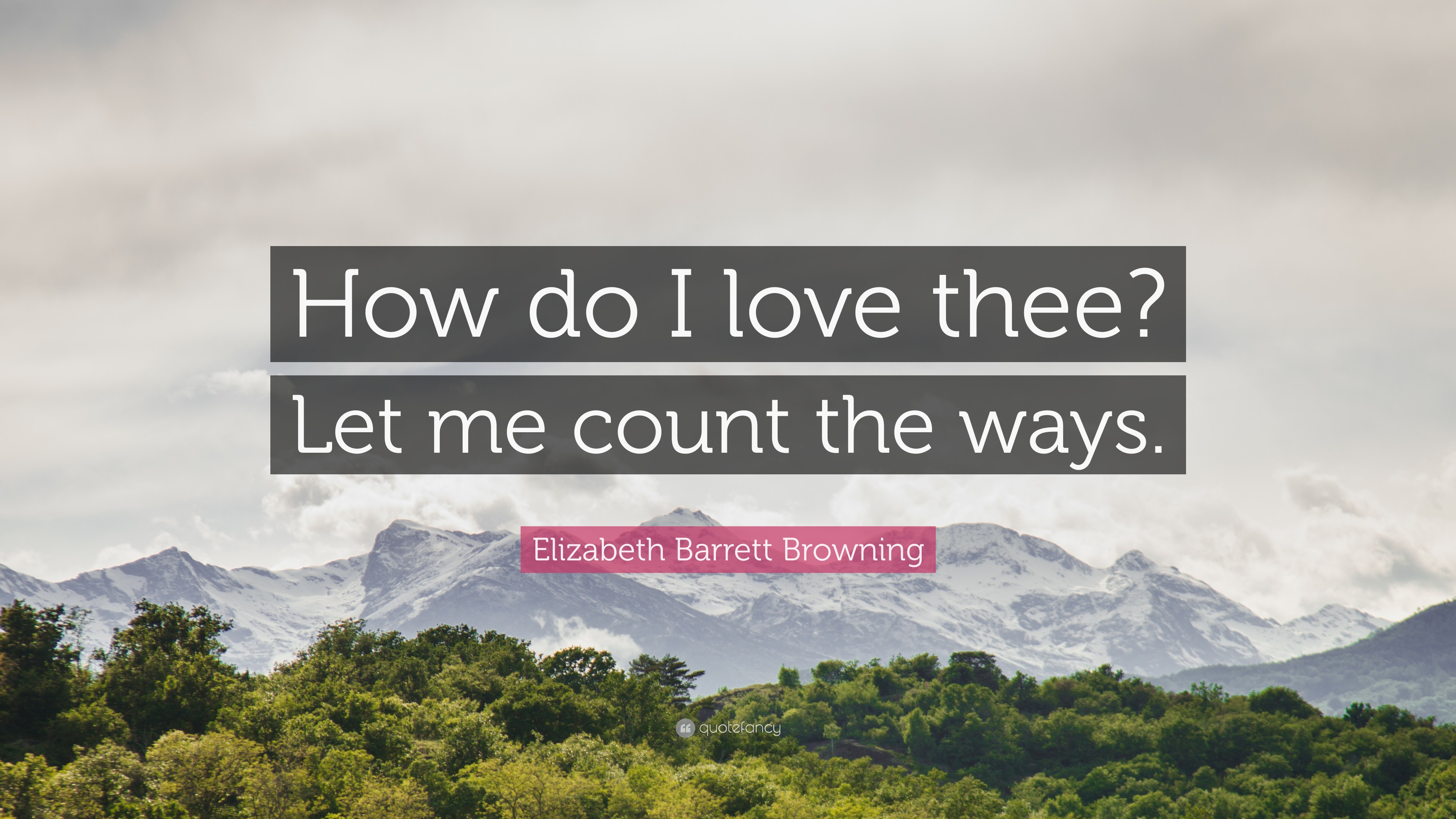



Elizabeth Barrett Browning Quote How Do I Love Thee Let Me Count The Ways




Sydenham Arts A Love Poem For Valentines Day How Do I Love Thee Let Me Count The Ways By Elizabeth Barrett Browning In Association With Kirkdalebooks Poemoftheweek Valentinepoetry T Co Efdwyx7rae
· Elizabeth Barrett Browning was one of the most prominent poets of the Victorian era One of the famous love poems in the English language is "How do I love thee? · Our Featured Poem is Elizabeth Barrett Browning's How do I Love Thee This week we return to Clare's Read of the Week selection from last August when she discussed the collection from which this week's Featured Poem is taken 'How do I love thee?Let me count the ways I love thee to the depth and breadth and height My soul can reach, when feeling out of sight For the ends of being and ideal grace




Remembering Elizabeth Barrett Browning How Do I Love Thee Europetimes




Elizabeth Barrett Browning Sonnet 43 Annotation Youtube
Let me count the ways" is a sonnet by the 19thcentury poet Elizabeth Barrett Browning It is her most famous and bestloved poem, having first appeared as sonnet 43 in her collection Sonnets from the Portuguese (1850)Let me count the ways by Elizabeth Barrett Browning How do I love thee? · Sonnet 43 Analysis "How do I love thee?
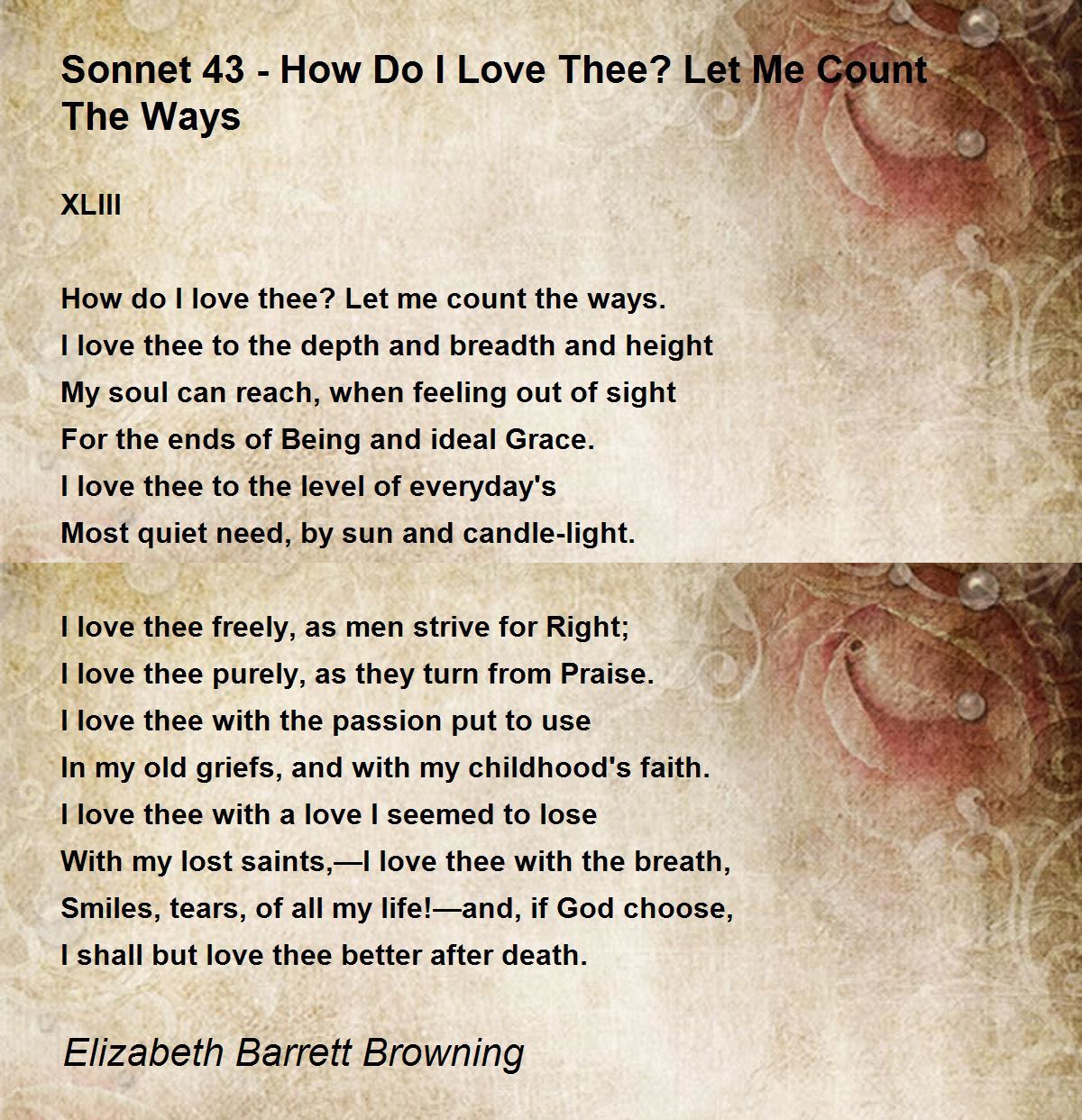



Sonnet 43 How Do I Love Thee Let Me Count The Ways Poem By Elizabeth Barrett Browning Poem Hunter




Quotabelle Quote
"How do I love thee?Let me count the ways I love thee to the depth and breadth and height My soul can reach, when feeling out of sight For the ends of Being and ideal Grace I love thee to the level of everyday's Most quiet need, by sun and candlelight I love thee freely, as men strive for Right;I love thee purely, as they turn from Praise




How Do I Love Thee Sonnet 43 By Elizabeth Barrett Browning Poems Poets Org




How Do I Love Thee Poem
I love thee purely, as they turn from




Uozcwfsq3gp Nm
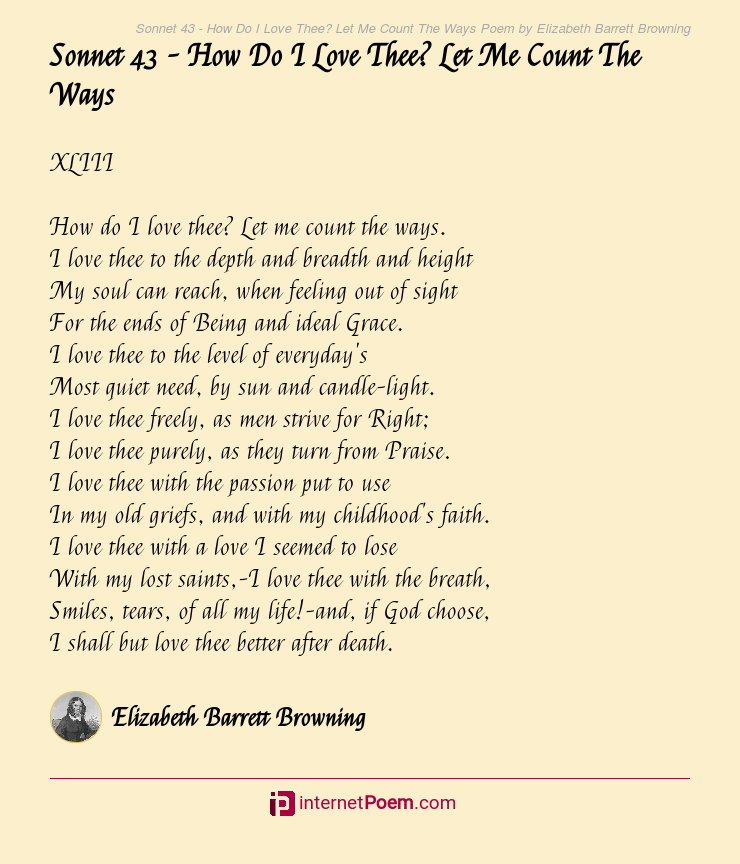



Sonnet 43 How Do I Love Thee Let Me Count The Ways Poem By Elizabeth Barrett Browning
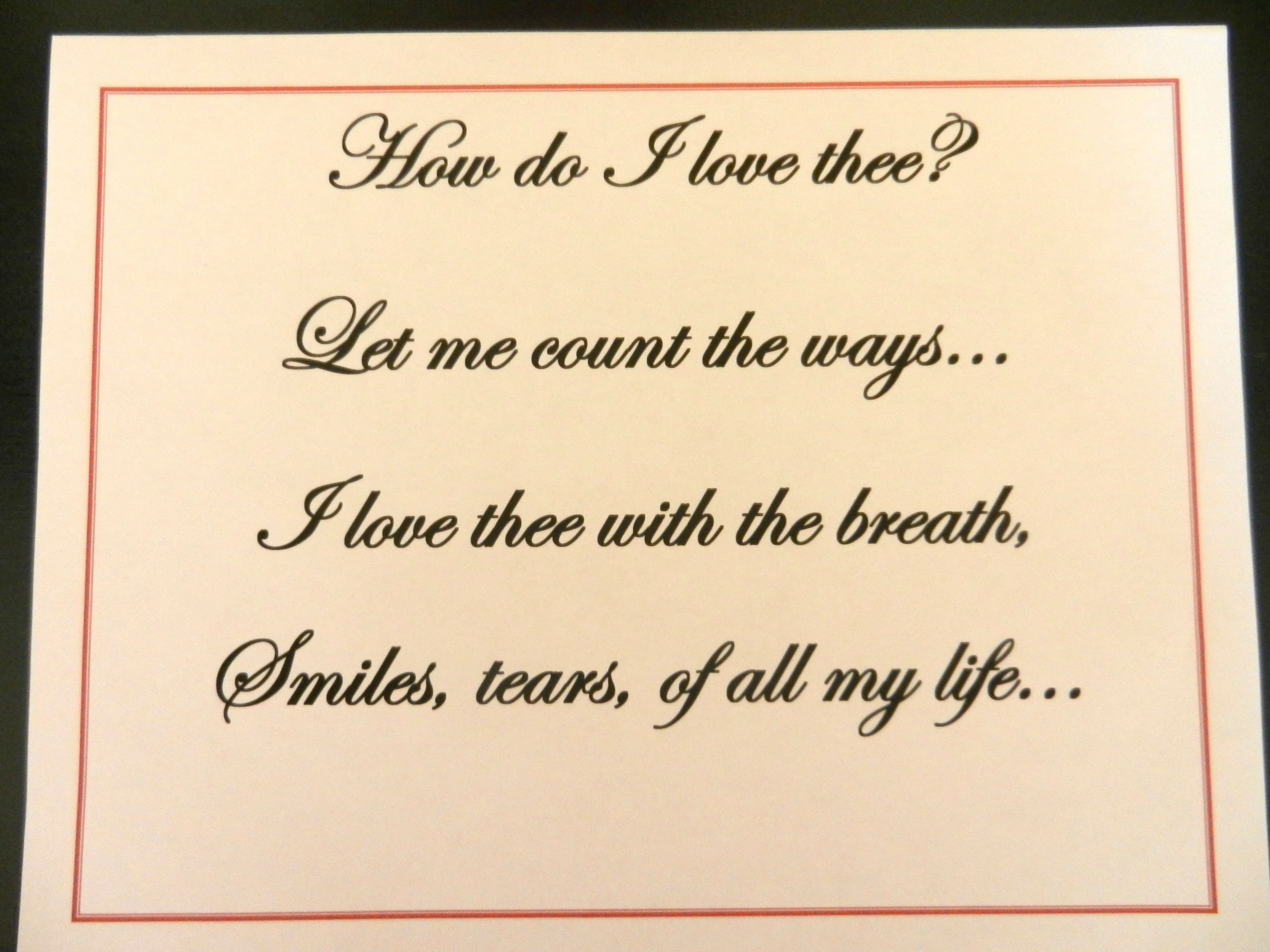



How Do I Love Thee Let Me Count The Ways Home Was Not Built In A Day



Elizabeth Barrett Browning Quotes Quotehd




Uozcwfsq3gp Nm




Elizabeth Barrett Browning Wikiquote




Pin On Love Quotes Poetry




English Grammar A To Z How Do I Love Thee E B Browning




Manuscript Of Elizabeth Barrett Browning S How Do I Love Thee The British Library
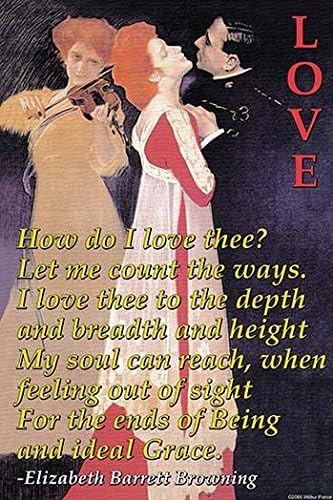



Elizabeth Barrett Browning Posterdruck How Do I Love Thee Let Me Count The Ways Von Elizabeth Barrett Browning 61 X 91 Cm Amazon De Kuche Haushalt




Print How Do I Love Thee Let Me Count The Ways Fipp




Barrett Browning How Do I Love Thee Let Me Count The Ways Flickr
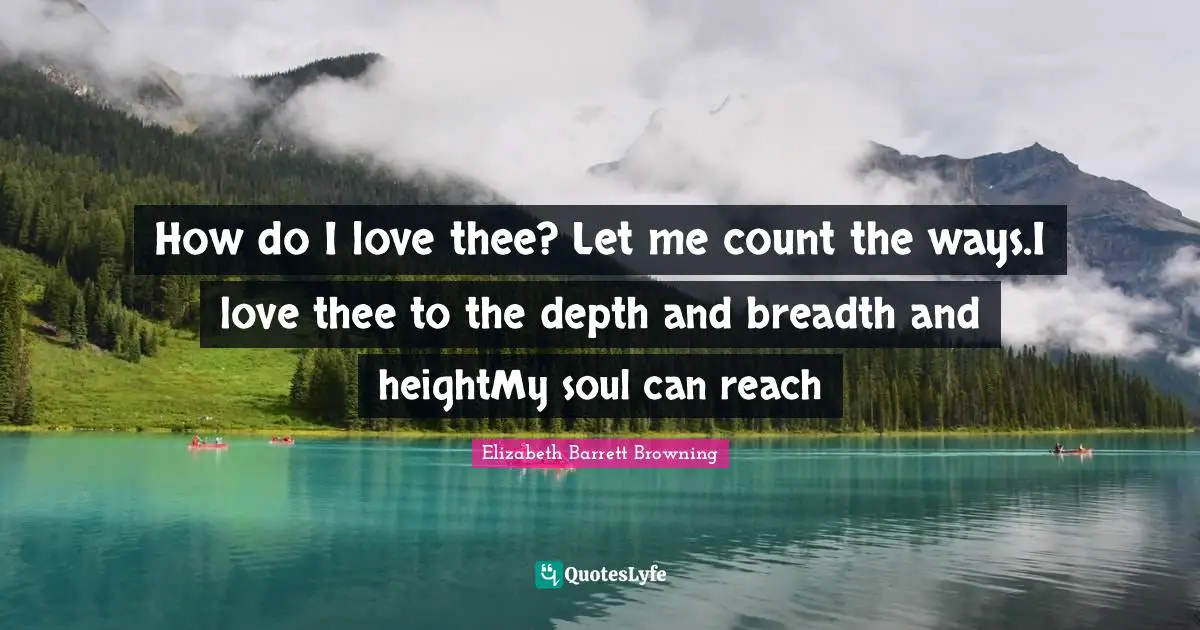



How Do I Love Thee Let Me Count The Ways I Love Thee To The Depth And Quote By Elizabeth Barrett Browning Quoteslyfe



How Do I Love Thee Let Me Count The Ways Picture Quotes




How Do I Love Thee Sonnet 43 National Poetry Day
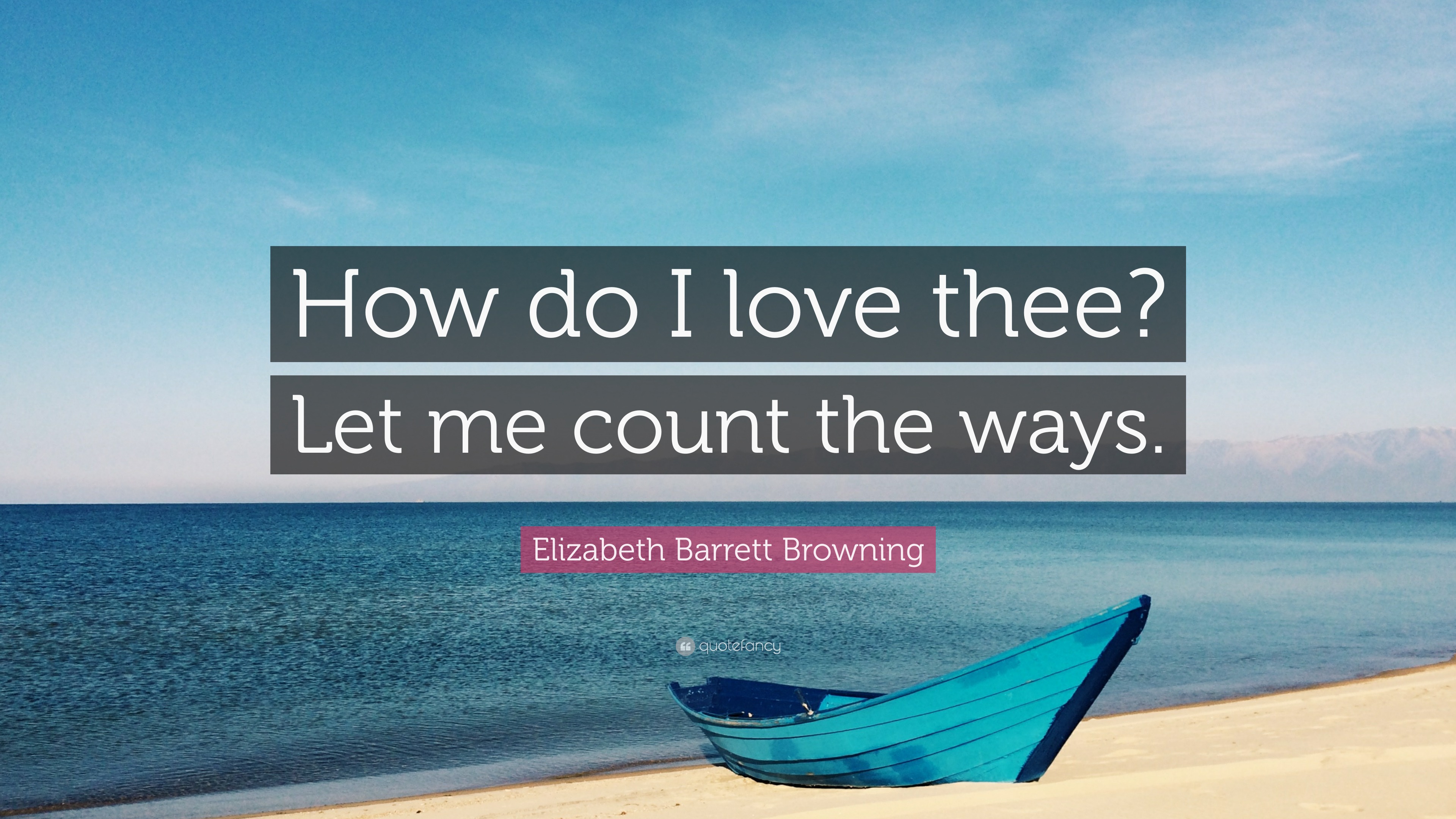



Elizabeth Barrett Browning Quote How Do I Love Thee Let Me Count The Ways
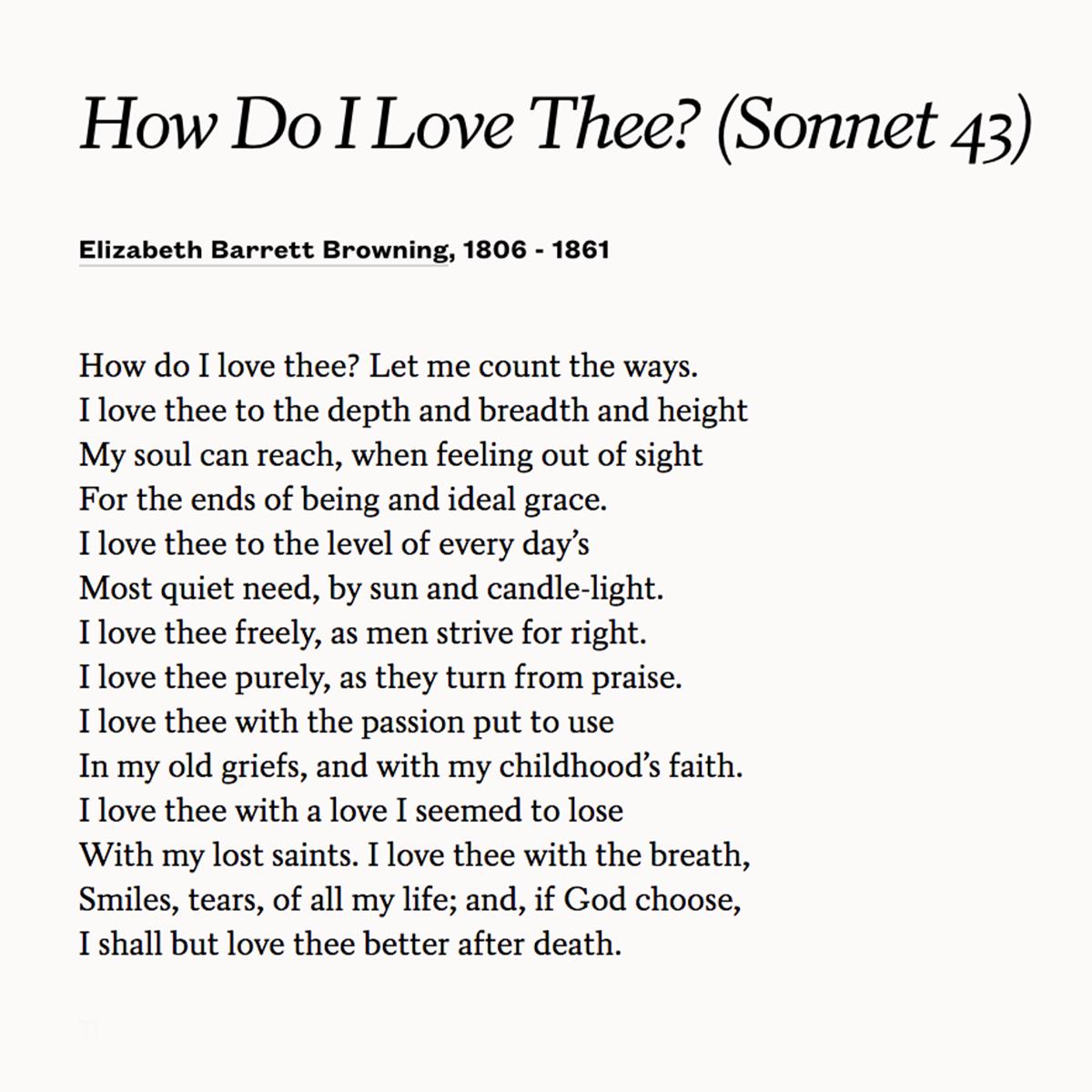



Michael Salinger Poetsorg She Also Wrote Anti Child Labor Pieces Read Before The Legislative Bodies But All That Ever Gets Trotted Out Are Her Love Poems Guess They Re Just More




Elizabeth Barrett Browning How Do I Love Thee Let Me Count The Ways Sonnets From The Portuguese 43 Youtube
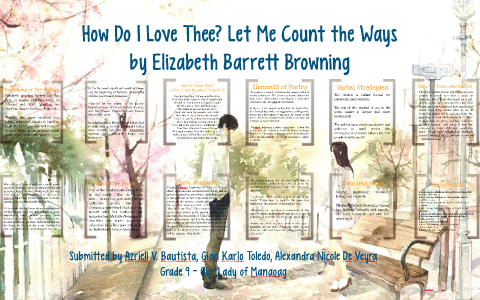



How Do I Love Thee By Elizabeth Barrett Browning By Len Toi
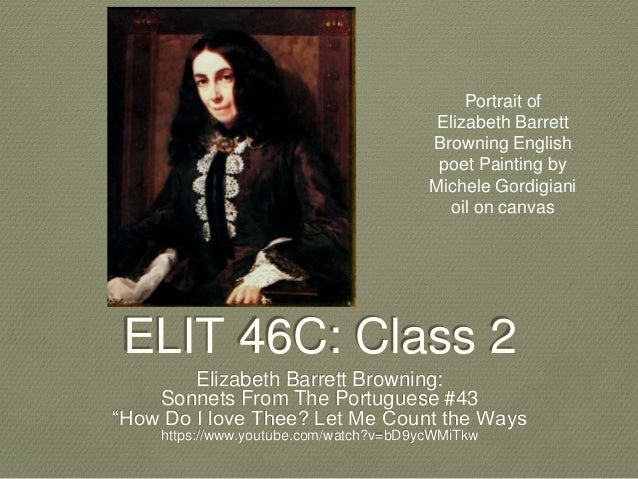



Elit 46 C Class 2




Sonnets From The Portuguese 43 How Do I Love Thee Let Me Count The Ways By Elizabeth Barrett Browning Poeticous Poems Essays And Short Stories




Elizabeth Barrett Browning How Do I Love Thee Let Me Count The Ways I




Pin On Wedding




How Do I Love Thee Let Me Count The Ways Idlehearts
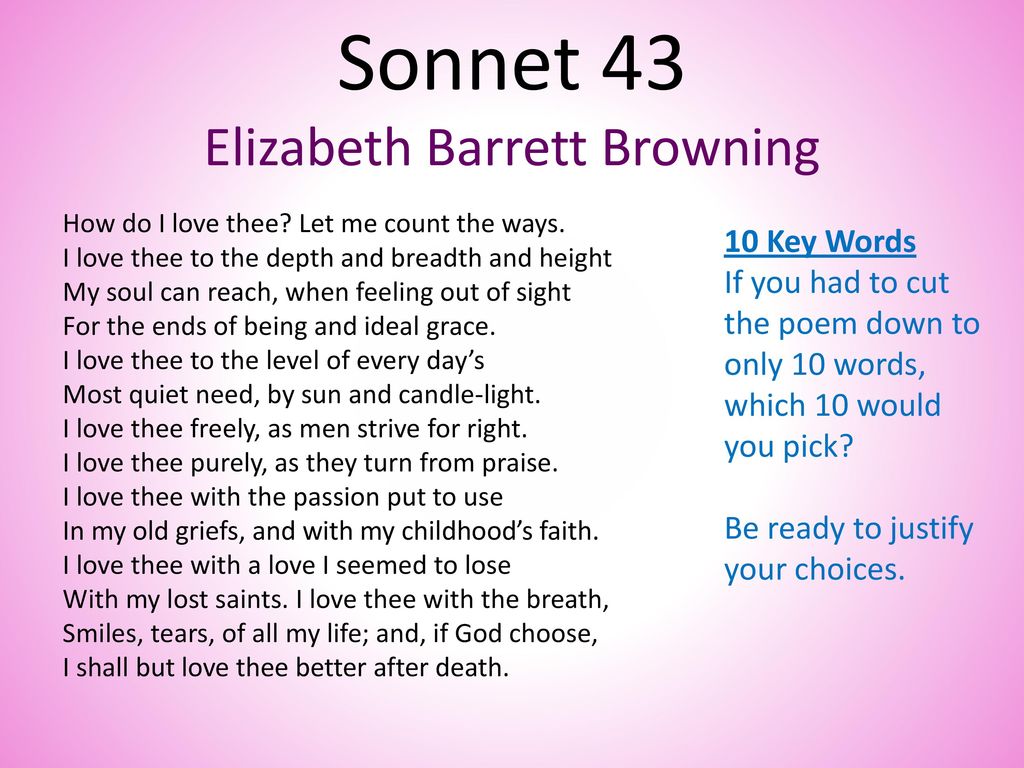



Sonnet 43 Elizabeth Barrett Browning Ppt Download




How Do I Love You Let Me Count The Ways 52 Reasons I Cute766
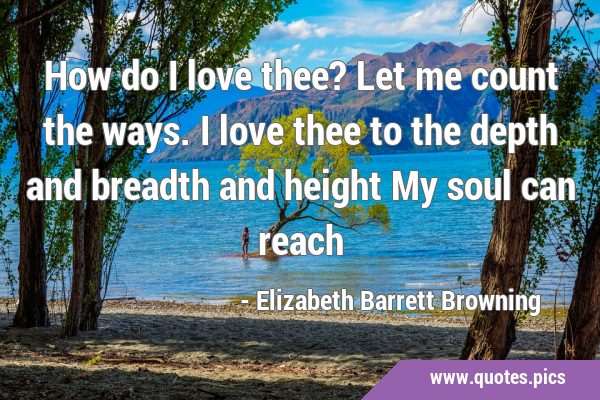



How Do I Love Thee Let Me Count The Ways I Love Thee To The Depth And Breadth And Height My Soul Can Reach



Elizabeth Barrett Browning Quotes Quotehd




Elizabeth Barrett Browning Quote How Do I Love Thee Let Me Count The Ways




Sonnet 43 Let Me Count The Ways I Love Thee Elizabeth Barrett Browning Cie Igcse Lit Poetry Youtube
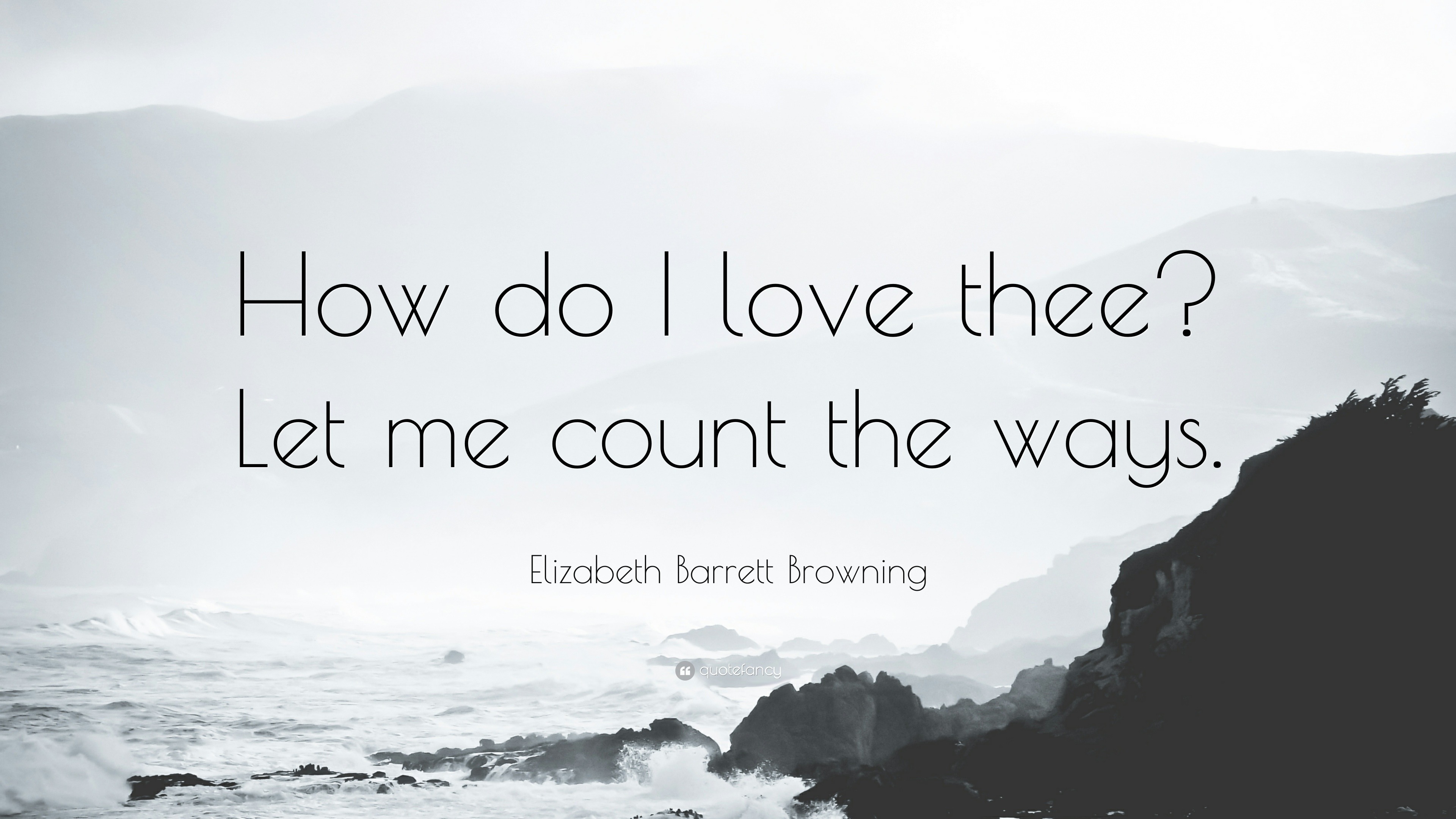



Elizabeth Barrett Browning Quote How Do I Love Thee Let Me Count The Ways




How Do I Love Thee Let Me Count The Ways Elizabeth Barrett Browning Quote 4k Wallpaper Mocah Hd Wallpapers




How Do I Love Thee Let Me Count The Ways Sonnets From The Portuguese 43 Poem Summary And Analysis Litcharts
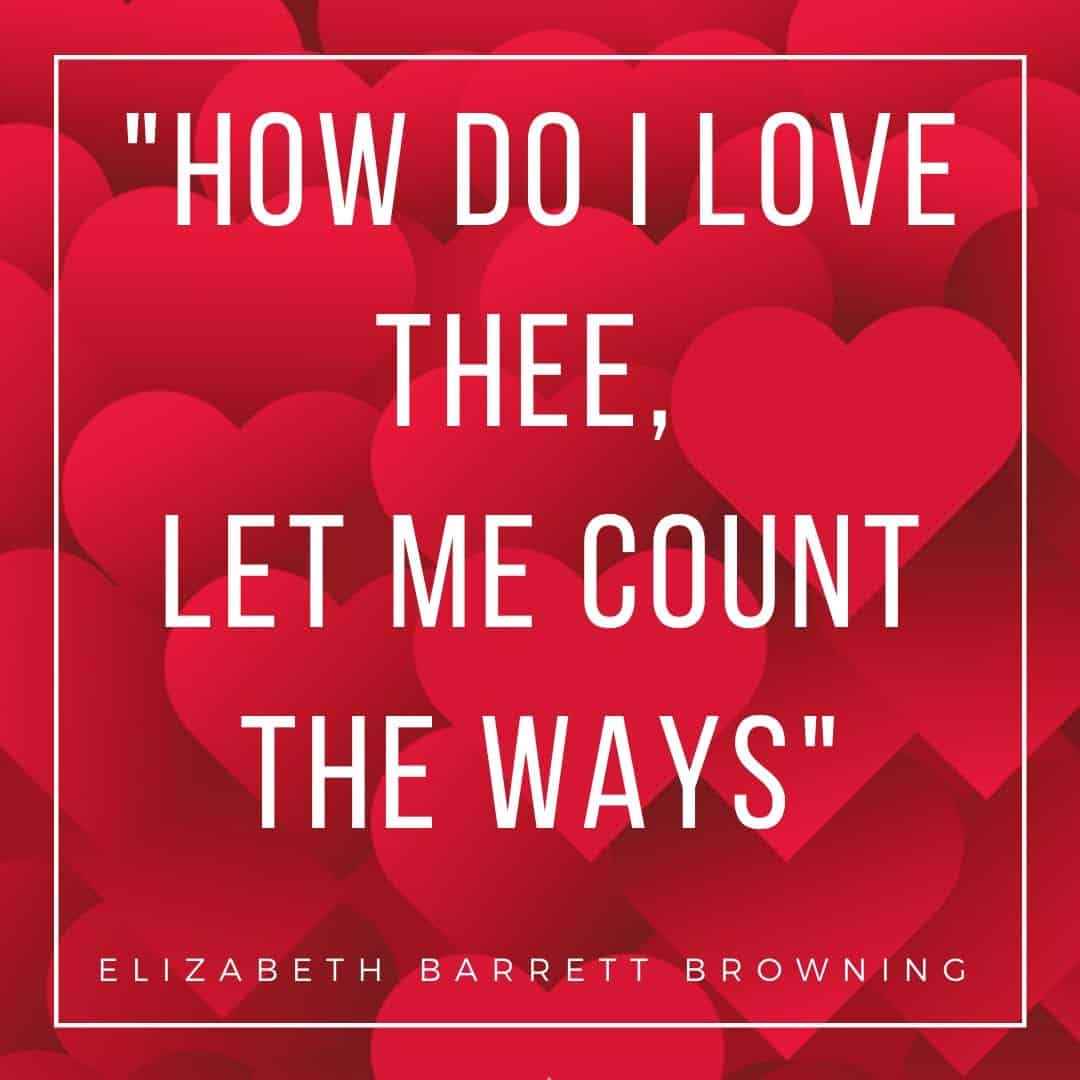



How Do I Love Thee Let Me Count The Ways Sonnet Analysis




How Do I Love Thee Docx Sonnets Robert Browning




Quote By Elizabeth Barrett Browning How Do I Love Thee Let Me Count The Ways I Lo




Pin On Lyrics Chords Poetry




Blog Sturgeon Valley Baptist Church Svbc




Elizabeth Barrett Browning How Do I Love Thee Let Me Count The Ways I




How Do I Love Thee Let Me Count The Ways Elizabeth Barrett Browning




How Do I Love Thee Let Me Count The Ways I Love Idlehearts




Sonnets From The Portuguese Wikipedia




Leaf Quote How Do I Love Thee Let Me Count The Ways Elizabeth Bar A Blackbird Sang




How Do I Thee Let Me Count The Ways The Millennial Mirror
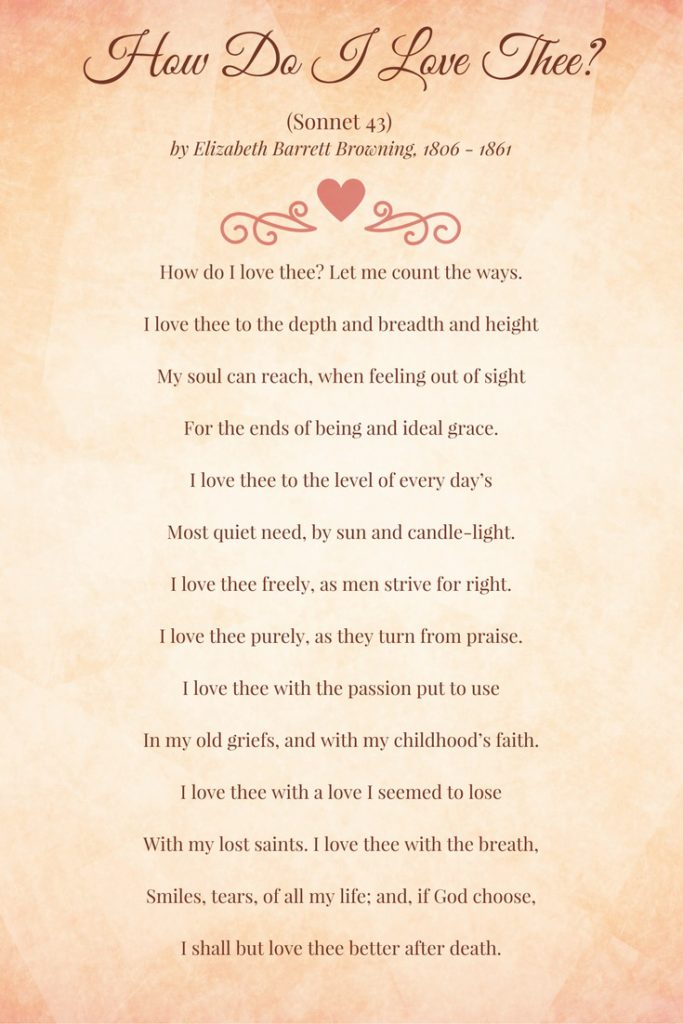



How Do I Love Thee Joy Van Eaton




Analysis Of Poem How Do I Love Thee By Elizabeth Barrett Browning Owlcation




How Do I Love Thee By Elizabeth Barrett Browning




Hate Poem Example Shakespeare Shall I Compare Thee
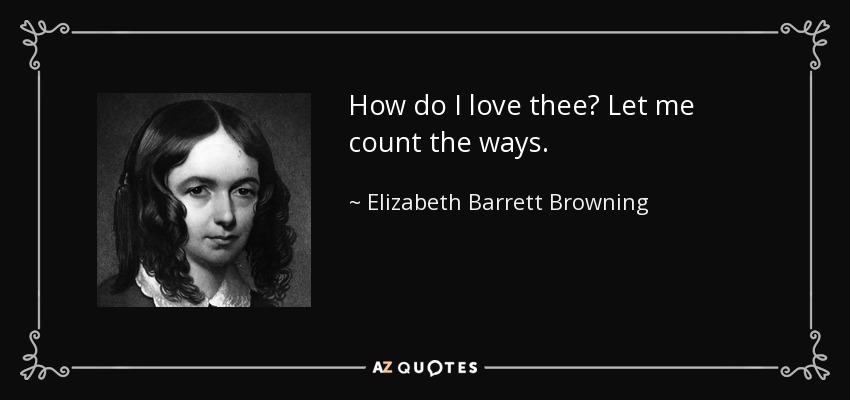



Elizabeth Barrett Browning Quote How Do I Love Thee Let Me Count The Ways




How Do I Love Thee Let Me Count The Ways




Pin On Quotes Poetry
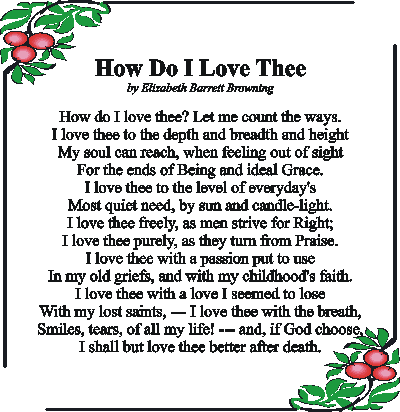



Analysis Of How Do I Love Thee By Elizabeth Barrett Browning Beaming Notes




How Do I Love Thee Let Me Count The Ways




How Do I Love Thee Let Me Count The Ways By Elizabeth Barrett Browning Age Of Jahiliyah
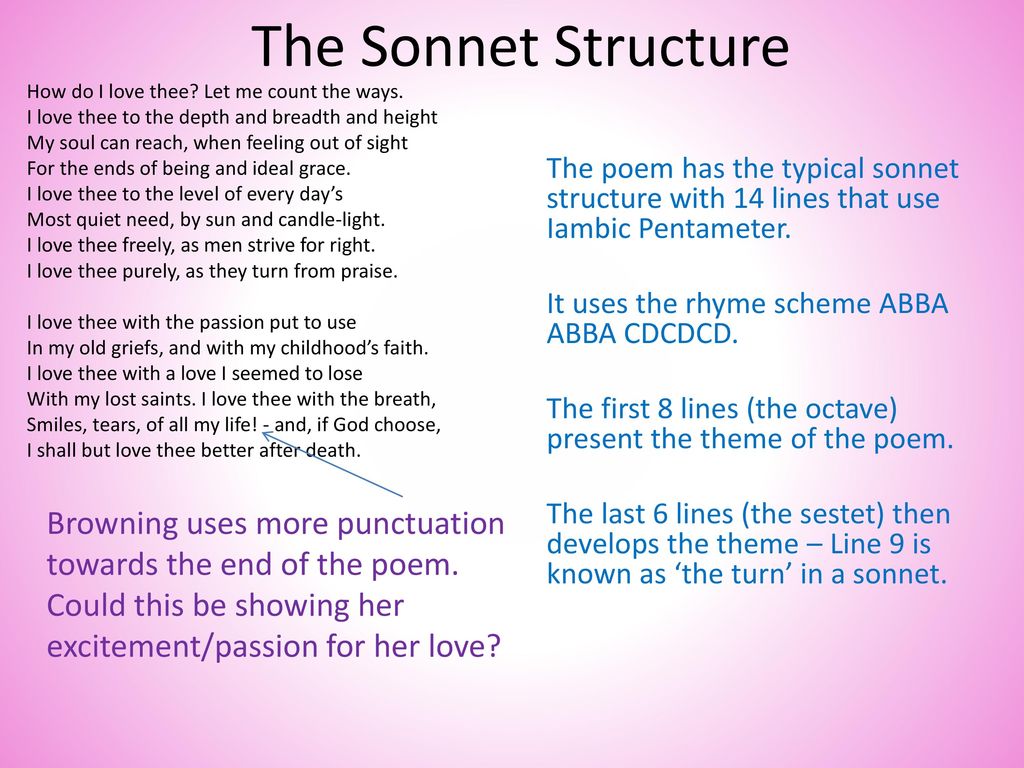



Sonnet 43 Elizabeth Barrett Browning Ppt Download
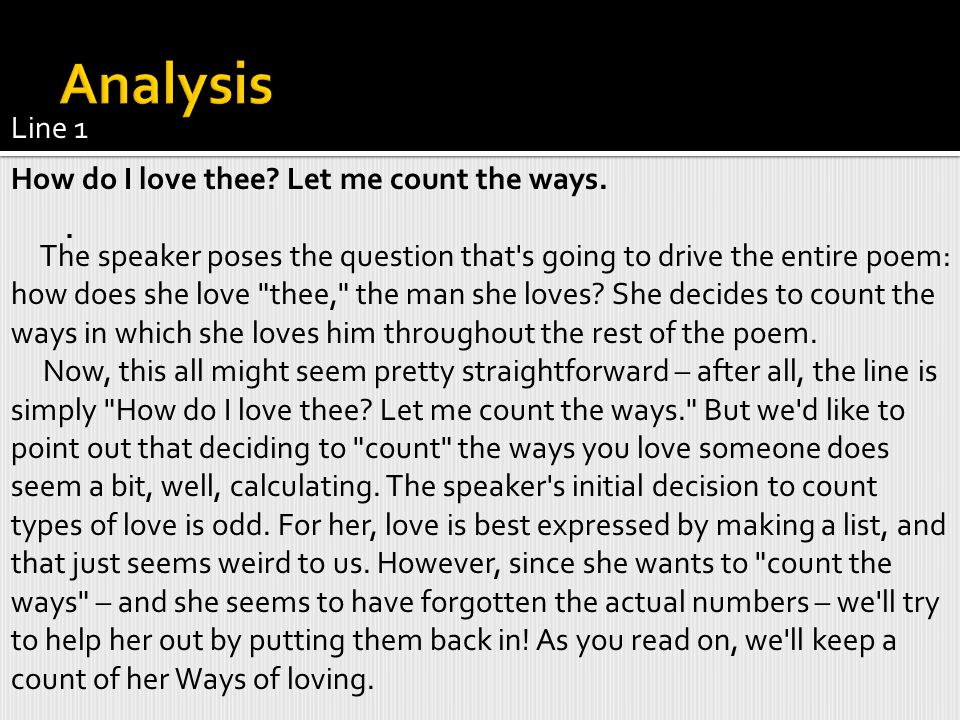



Elizabeth Barret Browning Ppt Download




How Do I Love Thee Let M Elizabeth Barrett Browning Quotes Pub
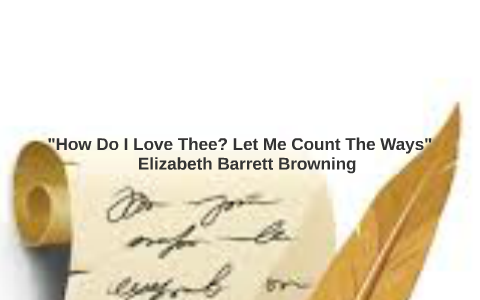



How Do I Love Thee Let Me Count The Ways By Paige Hartke



0 件のコメント:
コメントを投稿